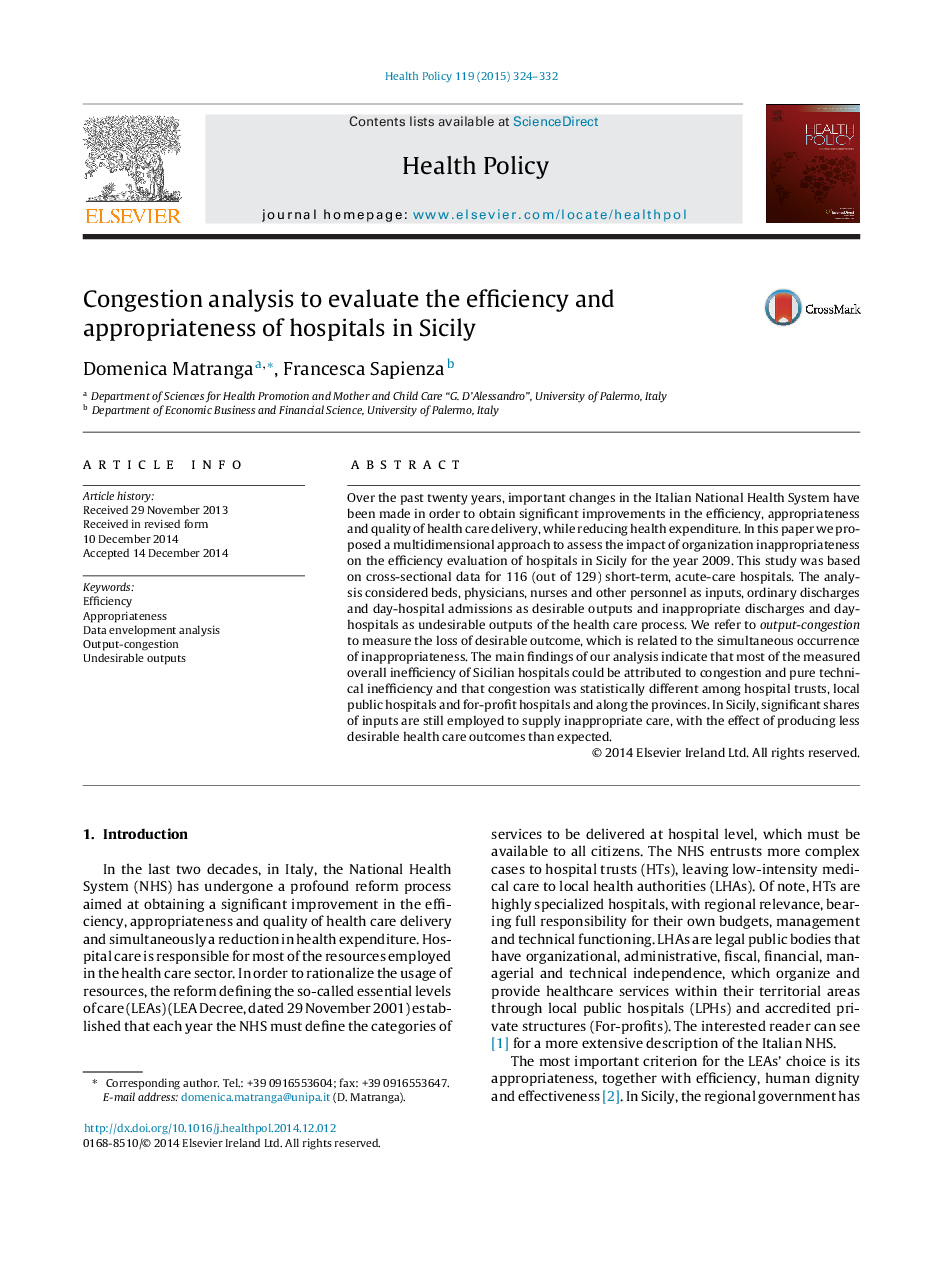| Article ID | Journal | Published Year | Pages | File Type |
|---|---|---|---|---|
| 6239476 | Health Policy | 2015 | 9 Pages |
â¢We assess the impact of organizational inappropriateness in efficiency evaluation.â¢We perform output-congestion analysis of Sicilian short-term acute-care hospitals in 2009.â¢Output congestion is associated with lower levels of total, scale and pure efficiency.â¢Hospital trusts the least congested, local public hospitals scale inefficient.â¢For profits use excess personnel and beds and have a deficit of ordinary admissions.
Over the past twenty years, important changes in the Italian National Health System have been made in order to obtain significant improvements in the efficiency, appropriateness and quality of health care delivery, while reducing health expenditure. In this paper we proposed a multidimensional approach to assess the impact of organization inappropriateness on the efficiency evaluation of hospitals in Sicily for the year 2009. This study was based on cross-sectional data for 116 (out of 129) short-term, acute-care hospitals. The analysis considered beds, physicians, nurses and other personnel as inputs, ordinary discharges and day-hospital admissions as desirable outputs and inappropriate discharges and day-hospitals as undesirable outputs of the health care process. We refer to output-congestion to measure the loss of desirable outcome, which is related to the simultaneous occurrence of inappropriateness. The main findings of our analysis indicate that most of the measured overall inefficiency of Sicilian hospitals could be attributed to congestion and pure technical inefficiency and that congestion was statistically different among hospital trusts, local public hospitals and for-profit hospitals and along the provinces. In Sicily, significant shares of inputs are still employed to supply inappropriate care, with the effect of producing less desirable health care outcomes than expected.
